How to build a scarecrow – the perfect job for February to protect young seedlings in spring
A scarecrow can be an inexpensive way to keep your seedlings safe from local wildlife


Scarecrows are a classic way of keeping your seeds and young plants safe from birds and deer. Best of all, they're a great way of reusing old material in the garden.
I spoke to a gardening expert about the fastest, simplest way to make a scarecrow for your yard and reuse old clothes in the garden.
While there are seeds to sow in February, much of the planting is yet to come. Making a scarecrow ahead of spring is a great way to get ahead on your gardening for the year. Here's our step by step guide.
What you need
- Two planks of wood
- A screw
- An old button-down shirt
- Old pants
- Newspaper, straw, or hay
- String
- A balloon or old ball
- Glue
- A post hole digger
- Burlap fabric (optional)
- Concrete (optional)
1. Make the frame
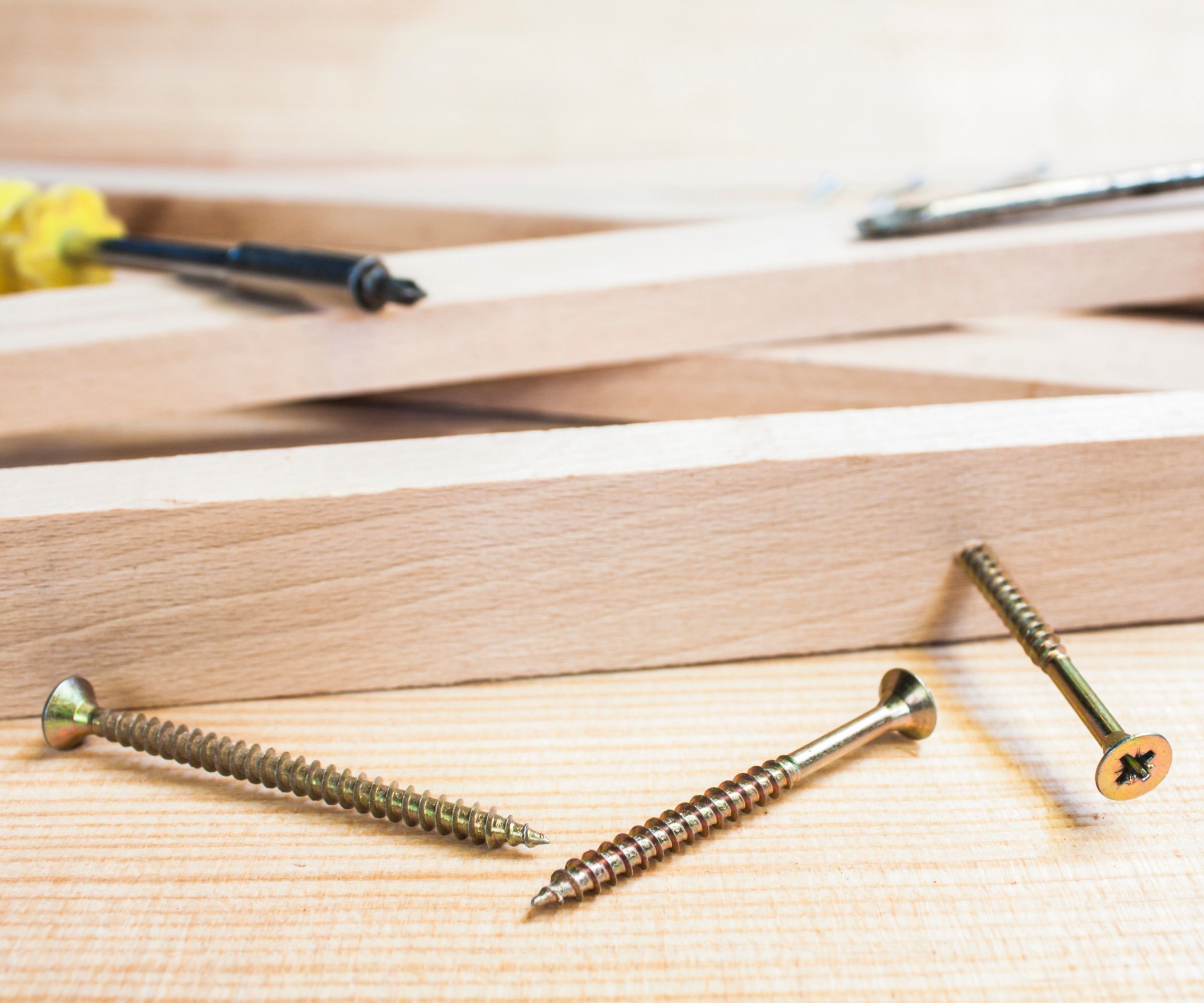
The first step is to make a frame for your scarecrow. There are a few ways of doing this, but the simplest and fastest method is to make a T-frame.
Yard expert Michael Clarke says 'A basic scarecrow frame usually consists of a few simple materials, most commonly wood, bamboo, or PVC piping. You'll need two long pieces for the arms and torso, typically 5-6 feet long each, and a shorter one for the legs. The arms can be attached horizontally across the torso to form a cross, like a “T” shape.'
This is the simplest method because it doesn't need much work or DIY knowledge. The simplest frame is to take two long planks of wood like these at Home Depot and screw them into a cross shape.
Michael explains 'Start by attaching the horizontal arm piece to the vertical torso piece using nails, screws, or twine. The frame can be loosely bound together so the scarecrow can be adjusted later. The legs can be attached either by nailing them directly to the base of the torso or using wire to secure them.'
If you use PVC pipe, you can make the base a little studier by filling the bottom of the pipe with concrete, gravel, sand, or water.

Michael Clarke is the founder of Yardwork and Pulled, the online platforms for everything home and garden. He has a degree in landscape architecture and horticulture from the University of California Davis. He was previously the founder of a landscape development and maintenance company, where he provided complete landscape services to homeowners and commercial property owners.
2. Attach clothes
With the frame assembled, the next job is to attach clothes. You can use anything, but old, ragged button-up shirts and pants are the best clothes to use, because they're easy to slip over the frame and tie to the beams.
Michael Clarke says 'Slip an old shirt and pair of pants over the frame. You can attach these using wire, rope, or even sewing the clothes to the frame. Be sure the clothes are loosely fitted to help catch the wind and create a more life-like shape.'
3. Stuff the clothes
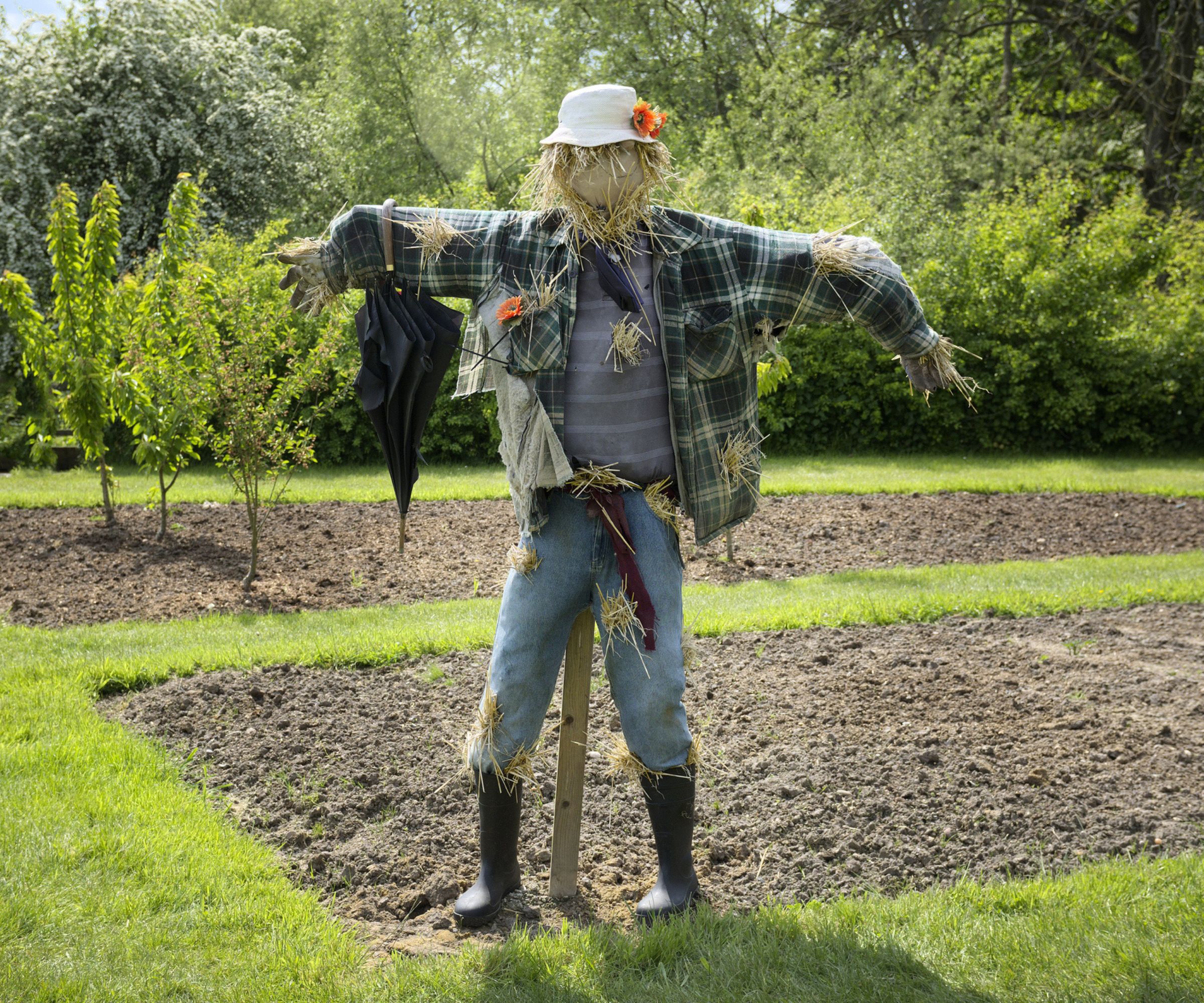
Once the clothes are attached to the frame, you need to stuff them with material to give them shape. The material doesn't matter - you just need to make the clothes look as though there are limbs inside them.
Michael Clarke explains that 'You can stuff the clothes with straw, hay, or even shredded newspaper. Leave enough room for the arms and legs to move a little so that they can flap in the wind.'
Once the clothes are stuffed with material, tie them at the cuffs to prevent the stuffing from falling out. You can tie them closed with string or elastic, or sew or staple them shut.
4. Make the head
A trickier step is to install a head, but this can be one of the more artistic parts of the process. Michael Clarke says 'For the head, you can inflate a large balloon, then cover it with layers of papermache. Once it’s dry, pop the balloon, and you’ll have a hollow shell to decorate with paint, markers, and accessories.'
If that sounds like too much work, Michael says 'A real or fake pumpkin is a good alternative for a head, especially around Halloween. You can carve eyes and a mouth to give it a more expressive look.' You can also use an old basketball to create a head and wrap some burlap fabric around it.
(If you opt to carve a real pumpkin, just remember it will begin to rot after a week or so!)
5. Install the frame
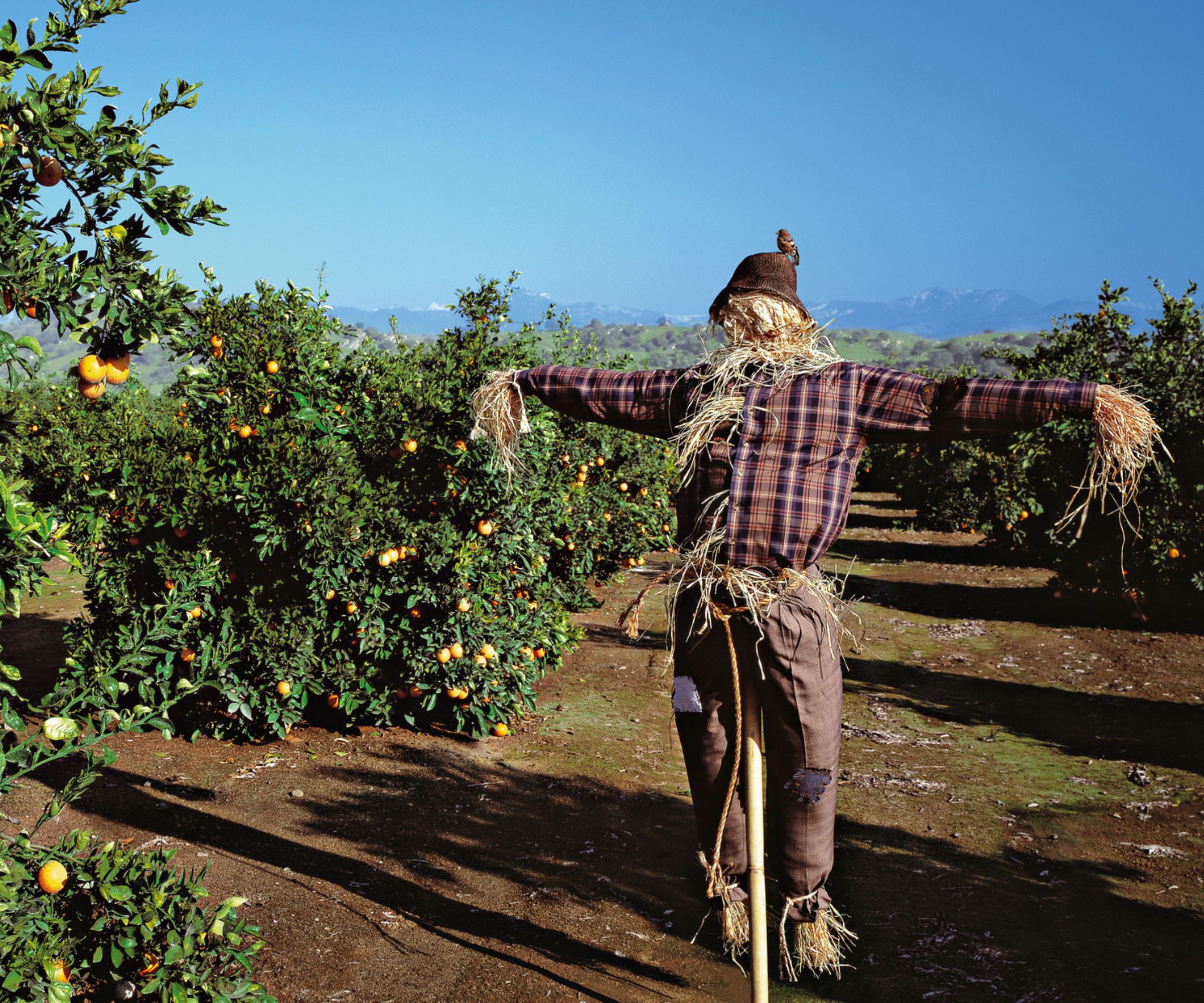
Now the scarecrow is complete, you're ready to install it in the ground near your seeds. 'Once the frame is built, use a shovel or a post digger to make a hole 12-18 inches deep. Secure the frame, by placing the legs in the two holes, making sure the frame is standing upright and stable.'
If the scarecrow is rocking back and forth in the hole, you can secure it by filling the hole with gravel or concrete. Alternatively, Michael says 'You can reinforce it with stakes or crossbars, or use a long vertical piece to serve as the "spine" if you're going for a more human-like scarecrow.'
However, make sure you check that it's safe to dig in the area. You could easily hit utility lines by digging this deep, so make sure you know where water, gas, and electricity lines run under your land.
6. Try alternative methods

But before you install the scarecrow, consider if other methods might be more effective. If you have scratched CDs, DVDs, or video game discs, you can use these to deter birds.
Michael Clarke says 'Hanging shiny objects like old CDs, aluminum foil strips, or reflective tape can scare birds because they reflect light and create movement. This method can be especially effective in areas with lots of birds.'
Michael adds that 'The sound of wind chimes can also scare birds away, especially if you use metallic or clanging ones,' but you have to be careful with these because wind chimes can be considered antisocial.
If you're growing grass, you can also use lawn netting like this from Amazon, which stops birds from getting to the seeds in the first place. You need to install it so that it's a couple of inches above the soil. This will keep birds from eating the seed, but you need to be careful to check the netting to make sure birds aren't getting trapped.
Finally, consider hanging owl or hawk decoys like this from Amazon. Many people find that these are particularly effective at scaring away birds, but they aren't always effective.
Scarecrows aren't the only way of reusing old clothes in a garden - you can even turn old clothes into compost. There are also tons of ways to reuse an old, broken hose, such as turning it into a soaker hose or repurposing it as bucket handles.
Sign up to the Homes & Gardens newsletter
Design expertise in your inbox – from inspiring decorating ideas and beautiful celebrity homes to practical gardening advice and shopping round-ups.

As a gardens and lifestyle contributor, Alex makes sure readers find the right information to help them make the best purchase. Alex got his start in reviewing at the iconic Good Housekeeping Institute, testing a wide range of household products and appliances. He then moved to BBC Gardeners’ World Magazine, assessing gardening tools, machinery, and wildlife products.
You must confirm your public display name before commenting
Please logout and then login again, you will then be prompted to enter your display name.
-
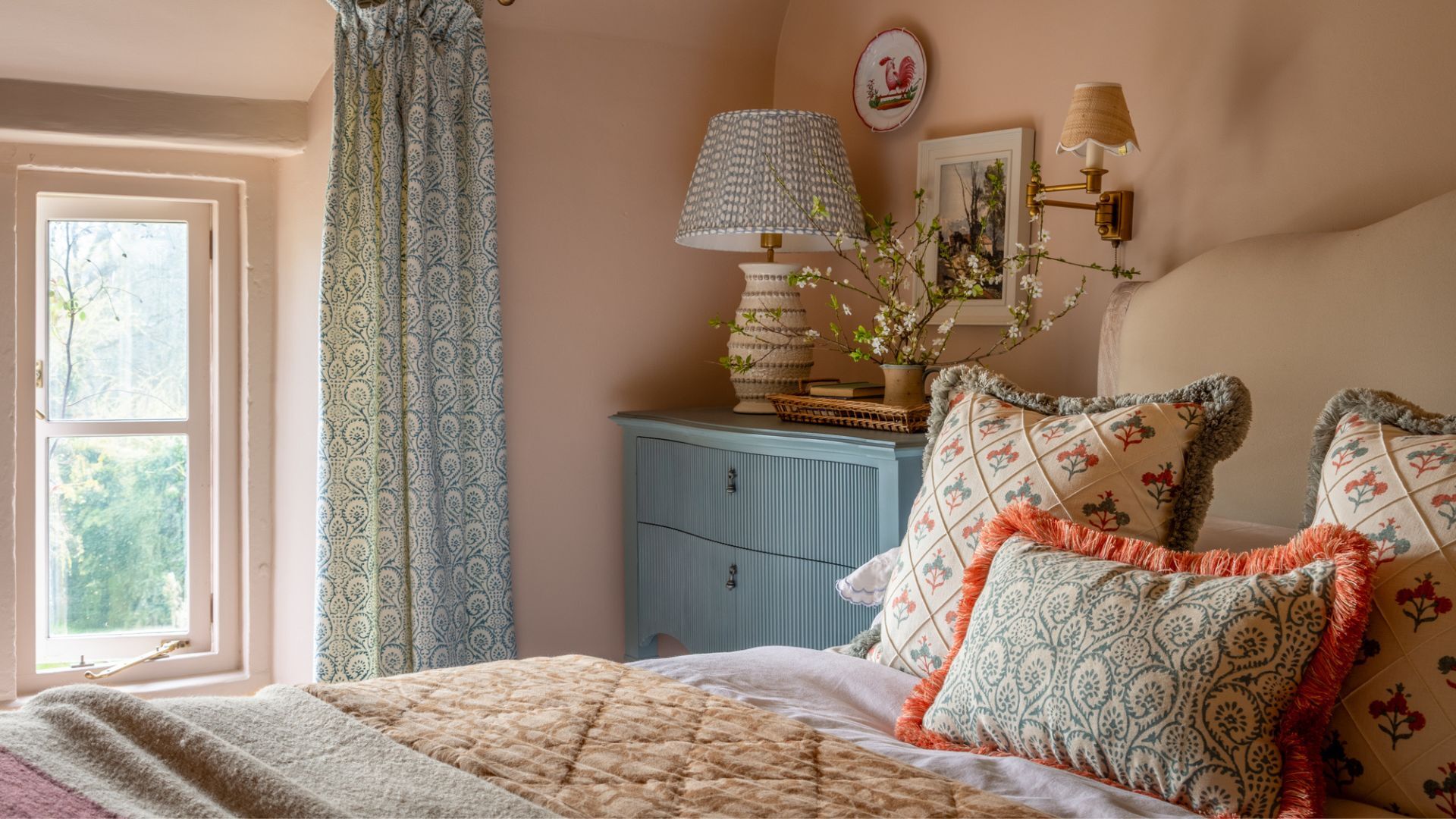 These are the 6 must-have colors to decorate with in April 2025
These are the 6 must-have colors to decorate with in April 2025What do retro-inspired yellows and beautiful blues all have in common? They're on our hot list for the season ahead
By Sophia Pouget de St Victor Published
-
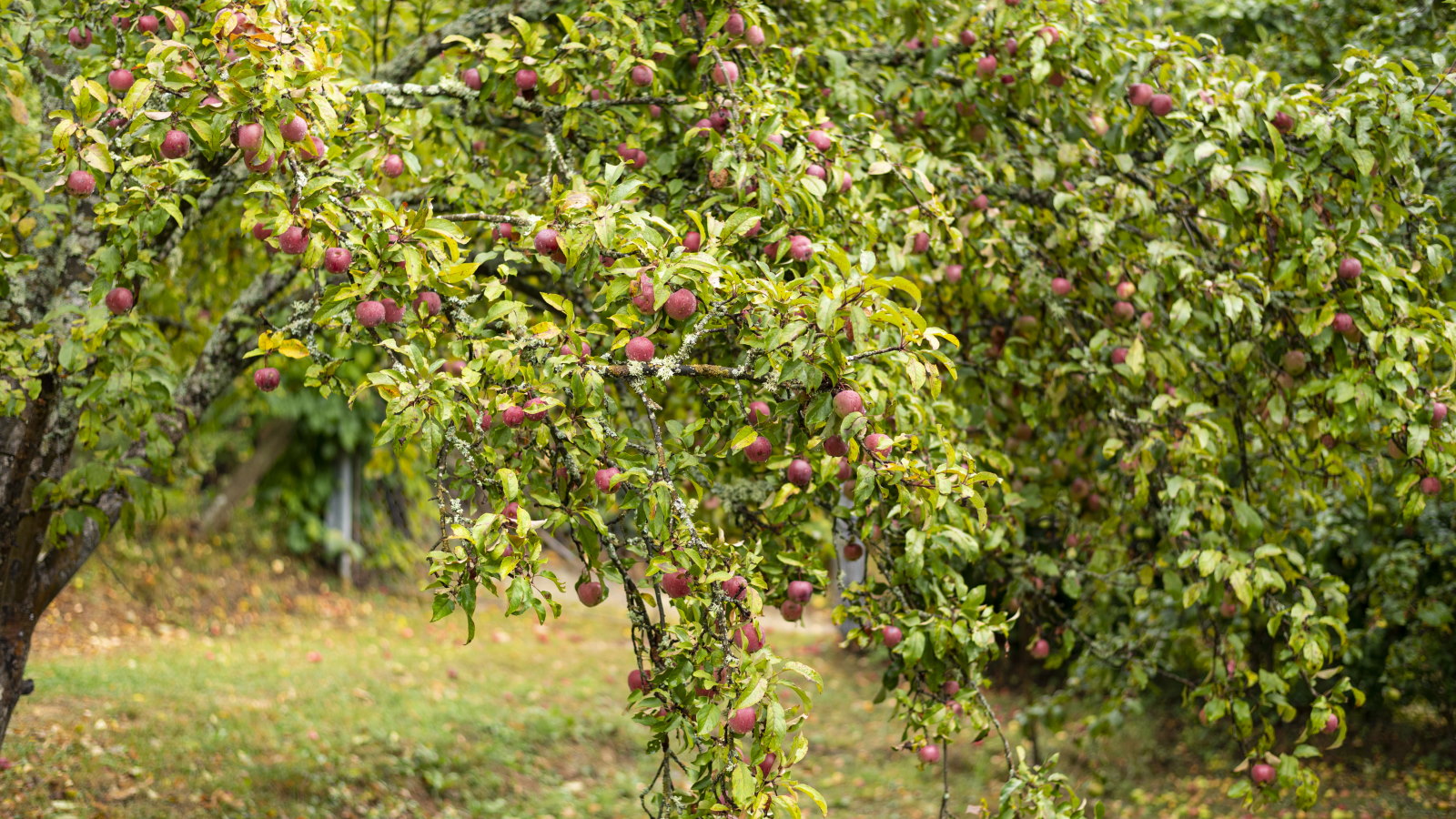 Plants never to grow next to fruit trees
Plants never to grow next to fruit treesExpert advice on which plants to keep away from fruit trees to encourage a healthy harvest
By Jacky Parker Published